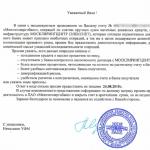It is not possible to harvest a generous harvest of raspberries without undergoing preventative treatment of berry plantings against diseases and diseases. Viruses and bacteria, fungi and insects also want to eat. Someone has taken a liking to young shoots, someone to a leaf blade or an internode, and everyone tries to make themselves more comfortable, thereby reducing our chances of a good harvest.
Treatment of raspberries in spring against diseases and pests
When considering how to treat raspberries in the spring against diseases and pests, you need to have a clear idea of what diseases or pests we are spraying against. The fact in which vegetative phase of the plant microorganisms and pests are in the most accessible form is of no small importance.
Even if your raspberry plant has not been exposed to the most common viral diseases of raspberries: anthracnose, white, autumn, purple (didimelosis), canker spots, as well as raspberry rust, preventive treatments should be carried out.
- Viruses are ubiquitous , and you can bring them not only with planting material, but also on clothes, but getting rid of them is quite difficult.
- Special measures must be taken when planting new seedlings . No matter how much you trust a nursery or market seller, it is almost impossible to guarantee the purity of the material from viral infection.
- Disinfection of planting material must be carried out by spraying and soaking the rhizomes in a solution of copper sulfate. until it ends up in the general raspberry patch . To do this, you need to dilute 100 g of copper sulfate in a bucket of water and treat the shoots and roots until completely wet.
- Recently, the drug has proven itself to be quite effective. Horus" By diluting 3 g per 10 liters of water and treating it during the period of bud break, it will well protect the raspberry tree from didimelosis and gray rot. But during the period when the buds are coming out, it is better to use “Topaz” at the rate of 9 ml per 10 liters of water.
- Before the buds open, for preventive purposes, the entire raspberry tree must be sprayed with the drug "Nitrophen" by preparing a solution at the rate of 200 g per 10 liters of water, or a 3% solution of Bordeaux mixture. It is necessary to dilute the drug as follows: dissolve 300 g of copper sulfate in 5 liters of water, and 400 g of lime in another 5 liters, and then pour it into the milk of lime, gradually stirring the copper sulfate solution.
- During the growing season, you can use 1% Bordeaux mixture. The treatment must be carried out before flowering and after harvesting the berries.
- For goblet rust of raspberries, spray with 1% Bordeaux mixture during bud break. If the damage is too large, then the procedure should be repeated before and after flowering.
To disinfect, you need to treat the raspberry plant with a solution of copper sulfate.
Features of treatment with iron sulfate

Treatment with iron sulfate is not effective.
Experienced gardeners have long noted the effectiveness of treatments with copper sulfate, but spraying with iron sulfate does not have a positive effect.
Pest control is the basis of a healthy raspberry tree
The most dangerous diseases include curl, raspberry overgrowth and chlorosis.

Chlorosis is transmitted by leafhoppers.
It is very unpleasant to observe a picture when, instead of several strong and powerful shoots, many thin and flexible shoots grow, with small, jagged leaf plates. Dwarf plants with chloratic foliage also look deplorable. Of course, such plantings must be uprooted, but insects that carry viruses and the fight against them are a must in a raspberry garden.
These are carried by leafhoppers. Therefore, before and after flowering, the plantings need to be treated with a 10% solution of karbofos, and the cut material should be filled with hot water for 2 hours.
Bunch leaf roller
The cluster leaf roller is a rather aggressive pest. If the spring turned out to be extended and cool, then it will be impossible to manage with one treatment against this pest.

Bunch leaf roller.
The first spraying is carried out when the buds open, and again before flowering begins. You can use the following drugs: “Decis”, “Talstar CE”, “Danadim”, “Bi-58”, “Fury VE”, “Karate”. In small areas you can use Inta-vir, Kinmiks, Aktelik.
Raspberry beetle
If the plantings are not large, then you can shake off the beetle into a net.
Do this early in the morning, when the temperature does not exceed 15°C. It is also applicable to collect damaged fruits to prevent the worms from falling to the ground to pupate.

The raspberry beetle should be shaken off early in the morning.
Industrial plantations are processed during the budding period if the attack intensity is 3–4 insects per bush (10 last year’s shoots). In this case we apply: " Karbofos", "Fufanon", "Aktelik", "Fosbetsid".
If the area is small, you can use Karbofos by diluting it 75 g in a bucket of water. If you use Aktelik, the solution is prepared at the rate of 15 ml per bucket of water.
Nettle leaf weevil

The nettle leaf weevil is an invasive insect.
- The insect is especially aggressive if strawberry plantings are adjacent to raspberries. In this case, everything needs to be processed.
- The most optimal treatments for raspberries are during the period when the flower clusters extend.
- For spraying, use a 10% solution of karbofos.
Bud moth and stem fly
The population of these insect pests can be destroyed, or at least significantly reduced, if spraying is carried out during the swelling of the buds.
A solution of 10% karbofos must be applied so that the buds are completely moistened, this will guarantee the destruction of the insect.
Raspberry shoot gall midge and mite
Timely mulching of areas significantly reduces the flight of mosquitoes from the ground, however in places with severe damage, insecticide treatments are mandatory.
By preparing a 10% solution of karbofos and treating the shoots before flowering and after harvesting, you will also prevent an increase in the raspberry mite population.
Treatment against pests with biological preparations
To save and prevent an increase in the number of insects in the raspberry field, the drug “Lepidotsid” is effectively used.

The drug Lepidocid is used for treatment against pests.
As soon as the air temperature rises to 15° C, treatments can begin. It is enough to dissolve 35–70 ml of the drug in 5 liters of water and treat 2–3 times with an interval of 10–15 days.
It also produces a good effect Bitoxibacillin " Treatments are carried out once every 15 days, dissolving 35 ml of the product in 5 liters of water.
Urea treatment
Amateur gardeners in the spring practice treating raspberries with a solution of urea (urea).
Being a nitrogen fertilizer, it has proven itself perfectly for the moment when the shoots begin to grow and they need “fast” nitrogen. Industrialists also use this fertilizer to feed raspberry plantations.

Urea is used to feed raspberries.
However, people still use urea to treat raspberry plantings in order to destroy pests. If you prepare a concentrated solution that can destroy an insect by contact, then it must be used before the buds open, and the insect has not yet emerged at this time.
When the buds have blossomed, the use of a concentrated solution is unacceptable due to possible burns, and a low concentration will not affect the insect.
It is for this reason that the Urea fertilizer does not exhibit an insecticidal effect and is not used in spraying against insects.
conclusions

With timely processing, raspberries will give a good harvest.
Raspberries, like other berry gardens and trees, need regular and timely treatments. By applying knowledge and experience, you will get a good harvest of high-quality and healthy berries.
Video about processing raspberries in spring
Proper processing of raspberries helps protect against diseases and ensure a good harvest. Raspberries have unique beneficial properties. All parts of the plant are used for medicinal purposes: leaves and stems.
(function(w, d, n, s, t) ( w[n] = w[n] || ; w[n].push(function() ( Ya.Context.AdvManager.render(( blockId: "R-A -466979-2", renderTo: "yandex_rtb_R-A-466979-2", async: true )); )); t = d.getElementsByTagName("script"); s = d.createElement("script"); s .type = "text/javascript"; s.src = "//an.yandex.ru/system/context.js"; s.async = true; t.parentNode.insertBefore(s, t); ))(this , this.document, "yandexContextAsyncCallbacks");
Preventive measures, including treatment against pests and fungal diseases of raspberries, should be carried out in a timely manner. Raspberry processing includes agrotechnical techniques, protective measures and inspection of bushes.
Processing raspberries to protect against diseases
All together will allow you to get a large harvest and preserve the raspberry plantation. The raspberry plantation needs constant inspection. There will be more work to do in the fall, since it will be difficult to prune raspberries and select healthy replacement shoots. Raspberry diseases will spread much faster.
There are three main points in processing raspberries: processing adult raspberry plantings, processing young plantings and obtaining healthy planting material for future plantings. The main measure for caring for adult raspberry plantings is early spring eradicating spraying of raspberries on dormant buds and the soil under the bushes.
The most famous and well-proven drug is Bordeaux mixture. Bordeaux mixture successfully fights many fungal diseases. Bushes along dormant buds and the soil under them are sprayed with a 1%-3% solution of Bordeaux mixture. The first treatment of raspberries with Bordeaux mixture is carried out in late April-early May.
You can replace Bordeaux mixture with a 0.5% solution of copper oxychloride. During the growing season, raspberries are treated with fungicides several times. The timing of spraying is determined by the specific conditions of the site, the occurrence of certain diseases and the weather. Approximate calendar for spraying raspberries with fungicides against fungal diseases:
Raspberry spraying calendar
- First spraying: in early spring on dormant buds and soil around bushes
- Second spraying: on blossoming leaves and shoots before flowering
- Third spraying: immediately after flowering
- Fourth spraying: immediately after harvesting
The importance of spring prevention
In early spring, raspberry plantings are inspected and preventive spring measures are carried out
In the spring, early spring loosening and spring mulching of the soil with manure are carried out. Spring mulching of the soil with manure is an important undertaking. Bacteria contained in manure destroy sources of primary infection in the soil, such as fungal spores that cause rust and various spots.
Preventive control of raspberry pests. This includes the fight against aphids, gall midges, ticks and other insects that carry viral diseases. Exterminatory spraying is carried out with insecticide preparations depending on the specific situation. Preventive spraying with insecticides is carried out in the first half of summer, during the breeding season of insects.
During the growing season, raspberry plantings should be inspected and diseased shoots should be removed in a timely manner. Infected shoots should be burned. When harvesting berries, ugly, rotting fruits should be destroyed. Weak, diseased root shoots should be cut out in a timely manner. Fight weeds. Keep the soil in good condition, avoid waterlogging and provide aeration.
A short list of measures for treating raspberries against diseases
- Timely spraying according to schedule
- Mulching with manure in spring
- Removing and burning diseased shoots
- Removing weak, excess, diseased root growth
- Weed control and soil care
Caring for young raspberry plantings
When planting a new raspberry plantation, certain rules must be followed. Using these recommendations, you can ensure a good harvest in the future and the health of young plantings. You cannot plant new raspberry bushes after the raspberries, strawberries, gooseberries, and potatoes. When planting a garden, you should avoid the proximity of these crops.
When purchasing planting material, you should carefully inspect the shoots. Inspect the planting material for the presence of rust, anthracnose, bacterial cancer, and stem bacteriosis. Read the article: Raspberry diseases. Planting material, if necessary, should be processed before planting. It is necessary to carry out disinfection in a 0.5% solution of copper oxychloride for 15-20 minutes (without immersing the root system in the solution).
This treatment will prevent the introduction of infection to the area. A month after planting, inspect the young bushes. Remove disease-damaged shoots. Carry out spraying according to the schedule as described in the previous paragraph. Fight against insects and aphids. Carry out proper agrotechnical care for young plantings in spring and autumn.
Timely and proper processing of raspberries includes: cutting and destroying fruit-bearing and diseased shoots, collecting and destroying rotten, dried fruits, fallen leaves, and weed control. Carry out autumn and spring “repairs” of raspberry plantings only with healthy planting material.
How to grow healthy planting material
When purchasing seedlings, you should familiarize yourself with the variety and choose varieties that are most resistant to a range of diseases. Before planting, the planting material is rejected. Seedlings showing signs of disease should be destroyed. If necessary, disinfect seedlings with a solution of 0.5% copper oxychloride.
- Only the stems are disinfected, followed by rinsing with water. The root system is not touched!
Creation of a mother plot for growing healthy seedlings. Such a site should be created isolated from other plantings. It should be systematically monitored and cared for. Care is the same as for adult plantings: removing diseased bushes, cleaning, mulching, spraying.
Subsequently, young seedlings from the mother plot can be used to restore and “repair” the main raspberry plantings. Proper treatment of raspberries against diseases and agricultural techniques guarantee you an excellent harvest!
In early spring, gardeners and gardeners have a lot to worry about. To protect the berry bush from the most harmful damaging factors, high-quality treatment of raspberries in the spring from diseases and pests is necessary. The absence of such measures often causes the loss of a significant part of the crop.
Features of raspberry processing
Correctly carried out treatment of raspberries includes a whole range of measures aimed at minimizing the risk of damage by the most common pathogens and pathogenic microflora.

Processing the berry garden combines agrotechnical techniques, as well as protective measures and visual inspection of the bushes:
- in early spring, plantings are inspected and preventive measures are taken;
- the first treatment is carried out on dormant buds and necessarily includes spraying the soil around the bush;
- the second treatment should be carried out in the presence of blossoming leaves, also spraying the young shoots;
- the third treatment is necessary for berry growers immediately after flowering, and the final spraying is carried out in the autumn, after the final harvest.
Raspberries: feeding scheme (video)
The complex of protective spring measures must include timely spraying according to the established schedule, the use of mulch, pruning and destruction of disease-affected shoots, pruning weakened or diseased shoots, removal of weeds and basic soil care in the raspberry field.

Basic chemicals
Spring processing of raspberries is not only competent pruning of the bush, but also spraying with products that can prevent or significantly reduce the risk of damage to the berry crop by diseases and pests.

In order to choose the right drug for treatment, you should not only correctly determine the type of damaging factor, but also assess the degree of damage and harmfulness.
| Drug name | Damage factor | Terms of use | Standard consumption and type of drug |
| "Aktellik" | Attacks of moths, moths, sawflies, leaf rollers, gall midges, aphids and raspberry beetles | 15 ml of concentrated emulsion per full bucket of water with a flow rate of 1.5 liters per 10 square meters. m | |
| "Iskra-M" | Raspberry protection before and after the mass flowering phase | ||
| "Karbofos" | Damage to raspberry-strawberry weevils, raspberry beetles, mites, raspberry bud moths and aphids | Protect the shrub before flowering and immediately after the last harvest | The average consumption of working fluid is 0.6−1.2 liters per 10 square meters. m |
| "Kemifos" | Damage to raspberry-strawberry weevils, raspberry beetles, mites, raspberry bud moths and aphids | 10 ml of concentrated emulsion per full bucket of water with a consumption of 2 liters per ten plants | |
| "Lepidocide" | Leaf roller, moth, moth and sawfly | Use during the growing season at intervals of a week or ten days | 20−30 g of powder per bucket of water with a working fluid flow rate of 2−9 liters per 10 square meters. m |
| "Fitoverm" | Damage by mites, aphids and budworms | At all stages of active vegetation | Use of a 0.2% working solution obtained from 2 ml of the drug per 1 liter of water |
| "Bordeaux mixture" | Damage from various spots | Protecting the shrub before flowering and immediately after the last harvest | 100 g of copper sulfate and 100 g of lime, diluted in a bucket of water and used in the amount of 1 bucket for every 100 square meters. m |

Effective folk remedies
As a rule, for the purpose of prevention in the spring, many gardeners use the following folk remedies.
| Folk remedy | Protective properties | Cooking method | Features of use |
| Tansy infusion | Against the raspberry beetle | Pour 0.35 kg of dried plant material with boiling water in a volume of 5 liters of water and leave for two days, then boil for 1/2 hour and increase the volume with water to 10 liters | Prevention in the evening hours on buds, with a consumption of approximately 1 liter per linear meter |
| Garlic infusion | Raspberry-strawberry weevil or flower beetle | Chop 0.5 kg of garlic and add 3 liters of water at room temperature. Leave for five days in a dark and cool place, and then strain | For 60 ml of infusion, add 45-50 g of crushed soap and a standard bucket of water. Spray twice with an interval of three days |
| Ash infusion | Against aphids | Pour 0.3 kg of wood ash into 3 liters of boiling water and boil over low heat for 18-20 minutes. Cool and strain | Add the prepared solution with water to ten liters and spray the raspberries |
| Table salt solution | Against garden ant attacks | Dissolve 1 kg of table salt in a bucket of water | Prevention before bud break with 200−250 ml per raspberry bush |
| Tobacco dust | Damage from aphids, thrips, weevils, moths, spider mites and ants | Buy tobacco dust | Dust the above-ground part with tobacco dust at a rate of about 35-45 g per 10 m² |
| Onion infusion | Eliminates damage from honeydew, aphids and spider mites, repels ants | Leave 0.25 kg of chopped onion and peel for 48 hours in a bucket of water | Strain and immediately apply to the bush |
Watering and fertilizing
For supporters of organic farming, it is optimal to apply the following fertilizers in the spring, which have a beneficial effect on the growth, development and productivity of raspberries:
- adding fresh manure diluted with water in a ratio of 1:10;
- adding rabbit or goat manure diluted with water in a ratio of 1:10;
- introducing bird droppings diluted with water in a ratio of 1:20;
- adding a herbal infusion prepared from 1 kg of herb and 1 bucket of water, infused for a week with daily stirring. The resulting infusion must be diluted with water at the rate of 1:10. The average consumption of infusion is 2 liters per bush.
How to get a big raspberry harvest (video)
Fertilizers should be applied in the evening hours, supplemented with watering. Spring application of nitrogen fertilizers and organic matter gives good results. It should be remembered that plants need to be watered as needed, avoiding either overdrying or excessive waterlogging of the soil.
Many gardeners grow at least a couple of raspberry bushes on their plots in order to stock up on a tasty “cure” for colds and acute respiratory infections by winter. And I'm no exception.
But, unfortunately, raspberries do not bring a good harvest every year. Either the bushes are attacked by insects, then suddenly they begin to get sick and wither.
To be fair, it should be noted that raspberries themselves are not resistant to viral diseases, although a lot, of course, depends.
But let's start in order. It is easier for gardeners to apply prevention and cope with pest invasions than to treat a plant for diseases.
Therefore, let's first get acquainted with bush pests.
Raspberry pests, description with photographs and methods of treatment
Raspberry beetle
This insect is very often found on raspberries. Brown beetles damage the buds, and their larvae feed on the berries. They all wait out the winter in the ground.
In May, as soon as the ground warms up, adult individuals climb to the surface. At first they behave quietly, without bothering the raspberry tree, since they feed on weeds and flowers of various plants.
Everything changes when the buds on the raspberries begin to appear, and they all climb onto them. Female beetles lay eggs before flowering, inside the flowers. The yellowish worm that is so often found inside the berry is a beetle larva.
How to protect raspberries from it? During the flight of the beetle, which coincides with budding and continues until the first flowers bloom, the raspberry tree is covered with a film or mesh with very small cells.
The beetles that have settled on the shoots are shaken off by spreading polyethylene or other material on the ground; fallen insects are collected by hand and destroyed.
Weeds are regularly removed from the bushes; this is where the beetle first lives.
Raspberry-strawberry weevil
Another flower lover, his second name is flower beetle.
The most ardent pests are females, which leave their oviposition in the buds and then gnaw the stalk.
As a result of this action, the buds dry out and fall off, and we are left without a harvest.
Raspberry bud moth
The larvae travel along the core of the shoots; the starting point is the bud, where the young caterpillar takes root after wintering.
Immediately cut off all damaged shoots and destroy them. Growing new shoots are treated with pesticides.
The parents of the caterpillars are brown butterflies with yellow spots on their front wings.
Raspberry glass
This butterfly resembles a wasp in appearance. Females lay eggs on the soil near the stems and do not cause any harm themselves.
What is difficult to say about their larvae, which move from the ground to the very core of the shoot for the winter. As a result, swellings form on them.
In the spring, the larva safely leaves its place of residence and goes outside. The stems stop growing, no berries form on it, and they gradually dry out. They must be cut out and burned away from plantings.
Raspberry stem or shoot gall midge
The appearance of growths and burst bark on the shoots “indicates” that gall midges have settled on the raspberries, or rather their larvae, which overwinter inside the shoots.
Insects lay eggs when the buds begin to bloom and can be found in the lower part of young shoots. From where the hatched caterpillars move into the bark.
All damaged parts of the plant, as in the previous case, are cut out and burned.
The larvae of mosquitoes or shoot gall midges often damage the raspberry tree, especially if it is infected with fungal diseases.
Mosquitoes leave their eggs under the bark of the shoots; the eggs hatch into larvae, which remain under the bark for a while, and then, gnawing out canals, go into the ground.
Above the habitat of the caterpillars, the bark acquires a bluish color. Damage becomes noticeable in the fall, when we begin to prepare the bushes for winter. By bending them to the ground, they begin to break easily.
If shoot gallicia is a frequent visitor in your area, then select raspberry varieties that are resistant to it. When purchasing, do not let your guard down, as seedlings from nurseries may already be infected with this pest.
Raspberry fly
Blackened, rotten tops are the result of the vital activity of fly larvae.
The female lays eggs at the tips of the shoots. The larvae that emerge from it move under the bark, eating through the annular passages.
The damaged tops of the shoots are cut off just below the place where the caterpillar is located and they are destroyed.
Aphid
These insects prefer to live in colonies. And since they feed on plant sap, their large population negatively affects the growth and development of the entire bush.
Shoots and leaves are stunted and deformed. But the big threat lies elsewhere; aphids carry viral diseases.
Ticks
Ticks are very small insects that are difficult to see. However, their vital activity is difficult not to notice.
Leaves infected with the raspberry beetle become covered with oily and light green spots. Over time, they become deformed and take on an ugly shape.
One solution is to plant varieties that are not sensitive to this pest. When purchasing, pay attention to the health of the seedlings; be sure to make sure that they are free from pests.
The spider mite is omnivorous and enjoys the juice of many plants, including raspberries. He likes to settle on thickened plantings, weakened and old shoots. The leaves are covered with light green dots and are covered with cobwebs from below. Gradually they turn yellow and dry out.
Leafhopper
The leafhopper also feeds on cell sap from leaves. White dots become noticeable on the leaves, shoots slow down, the berries become noticeably smaller, and the yield decreases. In addition, the leafhopper, like aphids, carries a dangerous viral disease.
All these insects cause significant harm to raspberries. Most of them overwinter in the ground or under fallen leaves and plant debris. Annual loosening of the soil in late autumn and early spring can deal a blow to the “enemy army”, since during loosening we destroy wintering sites.
The fight against raspberry pests in the spring continues by watering the soil with hot water (70–80 °C) from a watering can, but this procedure is carried out while the snow is still on the site.
Chemical preparations for treating bushes are used before flowering in the spring or after fruiting. What is the best way to treat raspberries before flowering against pests?
A solution of karbofos (50 g of the substance is dissolved in 10 liters of water) is considered a universal remedy, since it is aimed at most of the above insects. Except for those who hide inside the shoots, since the active substance practically does not penetrate inside. Also proven to be good: Atellik, Confidorm - the solution is prepared according to the manufacturer's instructions.
Some insects appear in the garden already during or after flowering, or we notice them during harvest. Before spraying raspberries with chemicals during flowering, it is worth weighing the pros and cons, since active chemicals may remain in the berries.
To treat bushes, it is better to use folk remedies during this period. Yes, they are selective, but they also help repel some pests.
How to treat raspberries against worms in berries?
You can try to remove the raspberry beetle larva with a biological insecticide - Lepidocide, but treatment must be completed 5 days before harvest.
Or they collect pests by hand. This, of course, is labor-intensive, but there is a chance to save most of the harvest.
How to treat raspberries against aphids during flowering?
The presence of aphids on the site is a nightmare for gardeners and gardeners. Aphids settle on many vegetable and fruit crops, so they can leave them without a harvest at all.
You can drive it away from the plant by spraying the bushes with infusions of potato and tomato tops.
The pest does not like infusions of calendula, onion peels or tobacco. Add 3 tablespoons of liquid laundry soap to the infusion; this will help the solution stick to the bark better. Treatment is carried out once a week.
How to treat raspberries against raspberry flies?
It is advisable to use chemicals if its numbers are very high. In this case, treatment with karbofos is carried out when the shoots do not exceed 15 cm in height.
But annual autumn loosening of the soil and mulching it in the spring with sawdust impregnated with tar, or adding wood ash or mustard powder under the bush will help you forget about its existence.
Raspberry diseases, description with photographs and methods of treatment
Anthracnose
This is one of the most common fungal diseases of shrubs. Ideal conditions for its development:
- raspberry thickening;
- insufficient aeration at high humidity.
Shoots 10–30 cm high are especially sensitive to the pest. The disease affects all parts of the plant. They are covered with gray spots with a purple edge. Often the leaves curl and fall off prematurely.
Diseased bushes have reduced winter hardiness. If the bush survives the winter, then next year, at best, weak fruit-bearing branches will appear.
Annual sanitary pruning of bushes, fertilizing them with phosphorus-potassium fertilizers and treating them with copper-containing solutions helps reduce the risk of developing anthracnose.
The infected plant is treated with a solution of copper sulfate using personal protective equipment; or oxychome, where the active ingredient is copper oxychloride. It acts quickly and has a long-lasting, healing effect.
Spraying is carried out before flowering or after harvesting.
Didimella or purple spot
This is a disease of fungal origin. Its development is provoked by high humidity and ambient temperature, as well as strong thickening of the raspberry tree.
The peak of the disease occurs in July–August. The leaves are affected first, with purple spots appearing around the base. Then they spread to the stems, capturing them completely. By autumn, the stems crack and become very sensitive to low temperatures.
At the first sign, we mercilessly cut out all infected shoots, since the fungus very quickly spreads to healthy plants. In late autumn, when all the foliage has fallen off, the bush is treated with pharmacoid.
Verticillium wilt
The pest of this disease persists in the soil for up to 14 years even in the absence of the host. The fungus enters the raspberry through the bark and spreads further through the vessels.
On hot summer days the disease manifests itself in all its glory. In 1-2 seasons the bush dies. The first symptoms of the disease are that the leaves in the lower part of the bush die, the shoots stop growing and turn blue.
Ulcerative spotting
A very dangerous raspberry disease that progresses quickly.
After infection, after 2 weeks, the bush becomes covered with brown spots. The pest easily penetrates the plant through cracks and wounds caused by pruning or injury to the bush by the thorns of other plants or trellises.
Late blight (root rot)
Root rot usually develops on old roots. Necrosis forms on them when there are very few suction roots.
The lower leaves do not receive proper nutrition and turn yellow and wither. Waterlogged soil and poor drainage promote the development of rot.
Gray mold or botrytis
Deals a blow to yield, since it mainly develops on berries and partially covers the leaves.
The main symptom is the appearance of reddish spots near the kidney. In winter they turn white.
Root cancer or goiter
The infection enters through wounds, cuts and cracks in the stems. As a result, growths appear on them - these are hard, spongy growths.
Bushes growing in cold, damp soil with high acidity are especially affected by goiter.
Viral diseases do not appear on their own; they are carried by insects - aphids and leafhoppers.
The main vectors are aphids and leafhoppers. These pests have several varieties; for example, you can find such insects in the garden.
- Dwarfism of the genus Rubus
A large number of thin, short shoots appear on the crop, which form the so-called “witch’s broom”.
The carrier of this mycoplasma disease is the leafhopper. When infected, the bush quickly degenerates and loses its productivity. The diseased bush is immediately removed, making sure that there are no roots left in the soil.
- Viral mosaic
The disease is carried by aphids. The leaves acquire a mosaic color, then become convex and gradually thin out.
The berries become smaller and lose their taste. The bush is stunted and its shoots are thin.
- Raspberry jaundice or infectious chlorosis
Another disease carried by aphids. It usually appears in early summer. The yellowing of the leaf blade begins first between the veins, then the entire leaf becomes yellow.
Gradually, the leaves become deformed, curled and wrinkled. The stems become longer and thinner in diameter. The berries are small and the yield decreases.
- Viral curl
Raspberries are infested by aphids. The color of the leaves becomes dark green, the leaves themselves wrinkle, their edges bend down. They feel hard to the touch. In autumn, the leaves become bronze in color, the fruiting shoots become deformed, and the berries dry out. The plant does not grow, the tops dry out.
All viral diseases cannot be treated. Unfortunately, there is only one way out. The bushes are completely dug up and burned. A new area is selected for raspberries, but they are not planted after tomatoes and potatoes.
The main activities are to prevent diseases:
- timely control of insects;
- sanitary pruning of the plant;
- purchasing raspberry varieties with immunity to viral diseases.
Fungal diseases can and should be fought. The bushes are regularly sprayed with a 1% solution of Bordeaux mixture before flowering and after harvesting. Pruning is carried out after fruiting, young shoots are cut out to thicken the raspberries. Weed out weeds, dig up the soil and mulch it.
Before spraying raspberries in the spring against diseases and pests, it is necessary to find out exactly who has settled on the bushes or why they are sick. The choice of a suitable remedy depends on this.
We use biological agents against insects, for example, fitoverm. I also advise you to pay attention to Polyversum BP, which protects raspberries from pathogenic bacteria and pests.
If there are a large number of pests, more radical methods are used - treatment with chemicals - Nitrafen solution will help against raspberry beetles, chlorophos against shoot gall midges. Fitosporin is used at the first signs of rot.
How to spray raspberries in the fall against diseases and pests
The second treatment is done after the entire harvest of berries has been harvested and a number of agrotechnical measures have been carried out, namely, we cut off all fruit-bearing shoots, did sanitary pruning, cut out young shoots that thicken the bush, removed all weeds, plant debris and fallen leaves near the bushes, loosened soil.
After this, we treat the bushes with a solution of Actellik, Fufanon or Intavir.
It can be treated for prevention, if there are no harmful insects and diseases, with Bordeaux mixture or karbofos.
But we spray not only bushes. We also make sure to cultivate the soil near them, because this is where pests and pathogenic fungi wait out the winter.

















